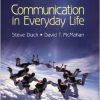Test Bank for Environment, 8th Edition, Peter H Raven, ISBN-10: 0470945702, ISBN-13: 9780470945704
$55.00 Original price was: $55.00.$29.99Current price is: $29.99.
Test Bank for Environment, 8th Edition, Peter H Raven, ISBN-10: 0470945702, ISBN-13: 9780470945704
Test Bank for Environment, 8th Edition, Peter H Raven, ISBN-10: 0470945702, ISBN-13: 9780470945704
Test Bank: This is not the typical eBook of the textbook. This is the instructor Test Bank used by instructors and teachers to create tests and worksheets. Contains all the potential questions and answers that you will actually see word for words on your exams. All test banks are in electronic format and will be downloaded easily to your computer or phone momentarily after your payment is confirmed. Test Banks usually contains all/any of this type questions with answers: true and false questions, essay questions, multiple choice questions, short answer questions and matching questions.

Product Details:
ISBN- 10: 0470945702
ISBN- 13: 9780470945704
Author: Jeffrey F. Beatty/Susan S. Samuelson/Patricia Sanchez Abri
The 8th Edition of Environmentbuilds on the previous comprehensive, systems-based environmental science issue with more in-depth information on systems approach, which emphasizes the interconnected nature of environmental science throughout the text. The book is even more reader-friendly integrated learning system designed to help move from general concepts to specific applications and continues to focus on currency. It presents the basic facts, various perspectives on issues, and framework to help readers reach their own informed decisions in a changing marketplace.
Table contents:
1 Introducing Environmental Science and Sustainability 1
Human Impacts on the Environment 2
Increasing Human Numbers 2
The Gap Between Rich and Poor Countries 4
Population, Resources, and the Environment 4
Types of Resources 4
Resource Consumption 5
The IPAT Model 7
Sustainability 8
Sustainability and the Tragedy of the Commons 9
Global Plans for Sustainable Development 9
Environmental Science 10
Earth Systems and Environmental Science 11
Science as a Process 12
Addressing Environmental Problems 14
Working Together 17
CASE IN POINT Lake Washington 15
2 Environmental Laws, Economics, and Ethics 21
A Brief Environmental History of the United States 22
Protecting Forests 22
Establishing and Protecting National Parks and Monuments 22
Conservation in the Mid-20th Century 23
The Environmental Movement of the Late 20th Century 24
U.S. Environmental Legislation 26
Environmental Policy Since 1970 26
Economics and the Environment 29
Strategies for Pollution Control 31
Critiques of Environmental Economics 32
Natural Resources, the Environment, and National Income Accounts 32
Environmental Justice 35
Environmental Justice and Ethical Issues 35
Mandating Environmental Justice at the Federal Level 36
Environmental Justice at the International Level 36
Environmental Ethics, Values, and Worldviews 36
Human-Centered and Life-Centered Worldviews 37
CASE IN POINT Environmental Problems in Central and Eastern Europe 34
3 Ecosystems and Energy 42
What Is Ecology? 43
The Energy of Life 45
The First Law of Thermodynamics 47
The Second Law of Thermodynamics 47
Photosynthesis and Cellular Respiration 48
The Flow of Energy Through Ecosystems 49
Producers, Consumers, and Decomposers 49
The Path of Energy Flow: Who Eats Whom in Ecosystems 50
Ecological Pyramids 53
Ecosystem Productivity 54
CASE IN POINT Life Without the Sun 48
CASE IN POINT How Humans Have Affected the Antarctic Food Web 52
4 Ecosystems and the Physical Environment 58
The Cycling of Materials Within Ecosystems 59
The Carbon Cycle 59
The Nitrogen Cycle 61
The Phosphorus Cycle 62
The Sulfur Cycle 64
The Hydrologic Cycle 66
Solar Radiation 67
Temperature Changes with Latitude 68
Temperature Changes with the Seasons 68
The Atmosphere 69
Layers of the Atmosphere 69
Atmospheric Circulation 70
The Global Ocean 72
Patterns of Circulation in the Ocean 72
Vertical Mixing of Ocean Water 73
Ocean Interactions with the Atmosphere 74
Weather and Climate 75
Precipitation 75
Tornadoes 78
Tropical Cyclones 78
Internal Planetary Processes 79
Earthquakes 80
Volcanoes 82
MEETING THE CHALLENGE Recycling Phosphorus From Sewage 64
CASE IN POINT Hurricane Katrina 79
5 Ecosystems and Living Organisms 85
Evolution: How Populations Change Over Time 86
Natural Selection 86
The Modern Synthesis 86
Evolution of Biological Diversity: The Domains and Kingdoms of Life 88
Principles of Population Ecology 89
Population Density 90
How Do Populations Change in Size? 90
Maximum Population Growth 91
Environmental Resistance and Carrying Capacity 92
Factors That Affect Population Size 93
Reproductive Strategies 94
Survivorship 95
Metapopulations 95
Biological Communities 96
The Ecological Niche 96
Competition 98
Symbiosis 100
Predation 102
Keystone Species 103
Species Richness in a Community 104
Species Richness, Ecosystem Services, and Community Stability 105
Community Development 107
Primary Succession 107
Secondary Succession 108
CASE IN POINT Species Richness in Lake Victoria 106
6 Major Ecosystems of the World 113
Earth’s Major Biomes 114
Tundra: Cold Boggy Plains of the Far North 114
Boreal Forests: Conifer Forests of the North 116
Temperate Rain Forests: Lush Temperate Forests 117
Temperate Deciduous Forests: Broad-leaved Trees That Shed Their Leaves 118
Grasslands: Temperate Seas of Grass 118
Chaparral: Thickets of Evergreen Shrubs and Small Trees 119
Deserts: Arid Life Zones 119
Savanna: Tropical Grasslands 121
Tropical Rain Forests: Lush Equatorial Forests 122
Vertical Zonation: The Distribution of Vegetation on Mountains 123
Aquatic Ecosystems 124
Freshwater Ecosystems 124
Estuaries: Where Fresh Water and Salt Water Meet 128
Marine Ecosystems 130
CASE IN POINT The Everglades 128
7 Human Health and Environmental Toxicology 139
Human Health 140
Health Issues in Highly Developed Countries 140
Health Issues in Developing Countries 141
Emerging and Reemerging Diseases 141
Environmental Pollution and Disease 143
Persistence, Bioaccumulation, and Biological Magnification of Environmental Contaminants 144
Endocrine Disrupters 146
Determining Health Effects of Environmental Pollution 147
Identifying Toxic Substances 147
Children and Chemical Exposure 150
Ecotoxicology: Toxicant Effects on Communities and Ecosystems 151
Decision Making and Uncertainty: Assessment of Risks 153
Risk Information as a Decision Tool 153
Ecological Risk Assessment 156
MEETING THE CHALLENGE Global Polio Eradication 142
CASE IN POINT Influenza Pandemics Past and Future 143
CASE IN POINT The Ocean and Human Health 152
8 The Human Population 160
The Science of Demography 161
Current and Future Population Numbers 161
Human Migration 162
Demographics of Countries 163
Demographic Stages 164
Age Structure 165
Population and Quality of Life 167
Population and Chronic Hunger 167
Economic Effects of Continued Population Growth 168
Reducing the Total Fertility Rate 168
Culture and Fertility 168
The Social and Economic Status of Women 169
Family Planning Services 170
Government Policies and Fertility 171
China and Mexico: Contrasting Population Growth Measures 172
Achieving Population Stabilization 174
CASE IN POINT The Millennium Development Goals 173
MEETING THE CHALLENGE The Poverty Action Lab 174
9 The Urban Environment 179
Population and Urbanization 180
Characteristics of the Urban Population 180
Urbanization Trends 181
The City as an Ecosystem 183
Phoenix, Arizona: Long-Term Study of an Urban Ecosystem 184
Environmental Problems Associated with Urban Areas 184
Environmental Benefits of Urbanization 187
Urban Land Use Planning 187
Transportation and Urban Development 188
Suburban Sprawl 188
Making Cities More Sustainable 189
MEETING THE CHALLENGE Green Architecture 190
CASE IN POINT Curitiba, Brazil 191
10 Energy Consumption 195
Energy Consumption and Policy 196
Energy Consumption 196
Energy Efficiency and Conservation 198
Energy Efficiency 199
Energy Conservation 204
Electricity, Hydrogen, and Energy Storage 205
Electricity 205
Hydrogen and Fuel Cells 206
Energy Storage 208
Energy Policy 209
YOU CAN MAKE A DIFFERENCE Saving Energy at Home 202
CASE IN POINT Hydrogen and Electricity for Transportation 207
11 Fossil Fuels 213
Fossil Fuels 214
How Fossil Fuels Formed 214
Fossil Fuels, the Carbon Cycle, and Climate 214
Coal 215
Coal Reserves 216
Coal Mining 216
Safety Problems Associated with Coal 217
Environmental Impacts of the Mining Process 217
Environmental Impacts of Burning Coal 218
Making Coal a Cleaner Fuel 219
Capture and Storage of Carbon from Coal 220
Oil and Natural Gas 221
Exploration for Oil and Natural Gas 223
Reserves of Oil and Natural Gas 223
Global Oil Demand and Supply 227
Environmental Impacts of Oil and Natural Gas 227
Synfuels and Other Potential Fossil-Fuel Resources 230
Environmental Impacts of Synfuels 231
CASE IN POINT The Marcellus Shale 225
CASE IN POINT The Arctic National Wildlife Refuge 229
People also search:
living environment 8th grade
shankar ias environment 8th edition
legal environment 8th edition
You may also like…
Test Bank
Test Bank for Chemistry, 9th Edition, Zumdahl, ISBN-10: 1133611095, ISBN-13: 9781133611097












